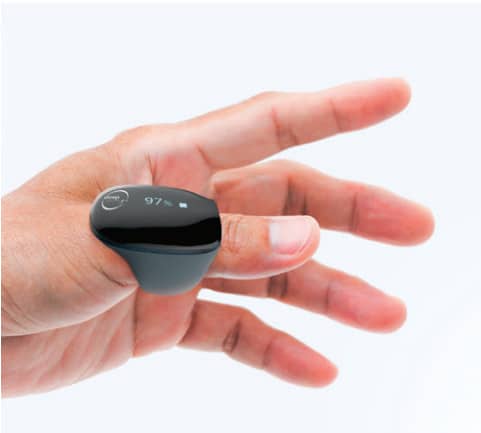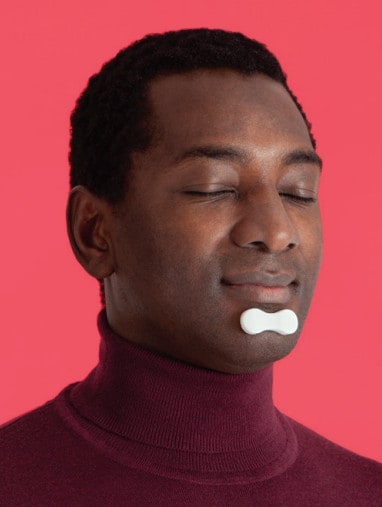 by Dr. Jagdeep Bijwadia
by Dr. Jagdeep Bijwadia
Polysomnography remains the gold standard for the diagnosis of sleep apnea and other sleep disorders. Most published research has relied on this technology, which allows for the direct visualization of signals needed to score respiratory events. For the diagnosis of more complex sleep disorders, polysomnography also gathers information from many other sensors that provide information about abnormal brain and muscle activity.
The three signals needed to recognize an apnea or hypopnea are airflow, respiratory effort, and oxygen saturation. Airflow is measured by thermistors or pressure transducers, respiratory effort by impendence belts, and oxygen saturation by oximetry. These signals can be continuously generated through the night, and in the case of polysomnography, sleep technologists supervising the patient in real time can adjust if signal quality is poor.
During polysomnography, sleep staging is accomplished by analysis of EEG signals in combination with eye movements and sensors for muscle-activity electromyography.
The first advances in home sleep apnea diagnosis took the three important signals for recognizing respiratory events and eliminated all other sensors used in polysomnography and the need for technologist supervision. For home sleep technology, advanced additional sensors were added to home sleep tests such as limited EEG, pulse rate, and accelerometry to estimate sleep time.
The transition to the home setting accelerated when Medicare and then commercial payers began accepting evidence that the measures for sleep apnea detection were similar in accuracy to polysomnography. The costs savings and convenience of home sleep testing has changed the landscape of sleep diagnostics. Most home sleep testing devices in the market were still using the traditional airflow, effort, oximetry, and EEG sensors to report AHI and sleep stages.
The most recent shift in diagnostics has come from the research that respiratory events and sleep staging can be determined from nontraditional signals. Each of the examples of home sleep testing devices outlined below uses nontraditional signals that allow for determination of important physiologic parameters with fewer signals.
In each case, before a new device could be marketed as a medical device, it had to be compared to a similar existing technology (usually polysomnography) and show substantial equivalence and safety as determined by the FDA.
It is important to recognize that the FDA determination that a medical device can be marketed safely and is substantially equivalent to a previously cleared technology is not the same as new technology being accepted as a standard of care by the specialty societies and practicing clinicians.
The academic rigor with which any device has been studied to get to FDA approval varies. Often the newer devices have not been studied in large populations or in subsets of patients’ specific medical problems or demographics, so clinicians need to be mindful of the FDA guidelines for use of these devices, be familiar with the scientific evidence, and understand the limitations of each one.
The newer signals from which AHI and sleep staging are derived vary with the device. Here are a few examples of the new technologies within the last year that report AHI and sleep staging using nontraditional signals.
NightOwl®
The NightOwl sensor (Ectosense) acquires accelerometry, pulse oximetry, and PPG signals. It is a home sleep apnea testing device with a finger-mounted sensor paired with cloud-based analytics software.

When a patient experiences an apnea or hypopnea, there is a change in heart rate and autonomic activity as well as a drop in oxygen saturations, which can be measured in blood vessels at the periphery. Each heartbeat causes a pressurized “pulse” of blood into the arteries of the body, which causes them to expand slightly before once again returning to their previous state. By shining a light on a patch of skin with an LED light source, the increased pulse pressure will cause a measurable difference in the amount of light reflected onto or transmitted through to a light sensor. Combining this signal with the drop in oxygen levels accurately reflects the occurrence of an apnea or hypopnea. The NightOwl also reports total sleep time and REM time, which also is indirectly determined by changes in the PPG amplitude and frequency.
In terms of ease-of-use and the ability to deliver muti-night testing, the device offers some significant benefits. The device is uniquely disposable, reducing logistic burdens for practices.
SleepImage®
SleepImage (MyCardio, LLC) utilizes a small finger-worn wearable device (ring) to collect the data needed to run their cloud-based analytics software, Cardiopulmonary Coupling (CPC), to evaluate sleep. The ring device is paired to a smartphone app that transmits data to the cloud-based software for analysis and automated report generation.

CPC is a a technique that assesses sleep parameters through moment-to-moment changes in the autonomic nervous system. The CPC-method analyzes interactions between autonomic heart rate variability (HRV) and respiratory oscillations. The PPG-signal is used to analyze fluctuations in sympathetic/parasympathetic influence affecting HRV and respirations during sleep. Oxygen-data (SpO2) is additionally used to calculate AHI and the output is reported as obstructive and central apneas as well as sleep time, NREM / REM sleep, sleep quality, sleep fragmentation, and periodicity.
Drowzle®Pro
This home sleep testing device includes standalone smartphone software that can record and analyze patient respiratory patterns mid-sleep, in order to allow telemonitoring for obstructive sleep apnea (OSA). The smartphone application uses a proprietary algorithm to analyze sound recordings and gauge risk for OSA. It reports a Resonea index which has been validated against the AHI but does not have an oxygen-saturation measure.

The unique feature is the acoustic signal received by a smartphone placed next to the patient with the absence of any device attached to the patient.
Sunrise
The Sunrise sensor (Sunrise SPRL) measures mandibular movement and calculates the obstructive respiratory disturbance index (ORDI) using proprietary artificial intelligence and machine learning (AI/ML) algorithms. The theory is that during sleep, there are a series of upper airway muscle activities that are reflected in mandibular movements. By measuring these movements, the occurrence of respiratory events and other sleep physiologic parameters can be accurately determined. The device reports sleep stages, AHI, head position, sleep latency, total sleep time, micro-arousals, respiratory effort, and bruxism. The current version does not have an oxygen-saturation sensor. The device consists of a sensor applied to the chin.

AcuPebble®
The AcuPebble (Acurable) is a home sleep-testing device with a sensor attached at the base of the neck to record the sounds generated by the patient’s respiratory and cardiac functions. The signals are transferred wirelessly to a mobile device and then uploaded to a secure cloud platform. Proprietary algorithms automatically extract signal-processing features and physiological parameters that can be used to report AHI for the diagnosis of obstructive sleep apnea.

Many of these devices aim at improving sleep-testing efficiency, patient comfort, and ease-of-use. As FDA-cleared devices, they have met the standard for substantial equivalence with previously approved sleep-testing devices. Multi-night testing and immediate availability of data once the study is completed represent significant advantages.
It should be noted, however, that the reports rely on automated scoring algorithms that are not available for scrutiny. There are no standardized scoring guidelines that would allow a sleep specialist to modify the scored events. These devices have often not been tested with demographics or groups of patients with specific comorbidities.
Keeping the FDA-approved uses in mind, understanding the benefits and limitations of each technology, and working collaboratively with sleep doctors who can help guide choice of device and management represents best practice.


 Dr. Jagdeep Bijwadia is board certified in internal medicine, pulmonary, and sleep medicine. He is founder and CEO of a national sleep telemedicine practice (Sleepmedrx) serving all 50 US states. He also serves as Chief Medical Officer for Whole You and is a clinical consultant for Ectosense. He currently holds a faculty position as Assistant Professor in the Department of Pulmonary Critical Care and Sleep Medicine at the University of Minnesota and has a private practice in Saint Paul, Minnesota. Dr. Bijwadia has been named top doc by the Minneapolis magazine as well as US News and World Report. He served as president for the Minnesota Sleep Society from 2016 to 2018 and is active in promoting sleep health in Minnesota. He also has an MBA from the University of St. Thomas in Minneapolis.
Dr. Jagdeep Bijwadia is board certified in internal medicine, pulmonary, and sleep medicine. He is founder and CEO of a national sleep telemedicine practice (Sleepmedrx) serving all 50 US states. He also serves as Chief Medical Officer for Whole You and is a clinical consultant for Ectosense. He currently holds a faculty position as Assistant Professor in the Department of Pulmonary Critical Care and Sleep Medicine at the University of Minnesota and has a private practice in Saint Paul, Minnesota. Dr. Bijwadia has been named top doc by the Minneapolis magazine as well as US News and World Report. He served as president for the Minnesota Sleep Society from 2016 to 2018 and is active in promoting sleep health in Minnesota. He also has an MBA from the University of St. Thomas in Minneapolis.